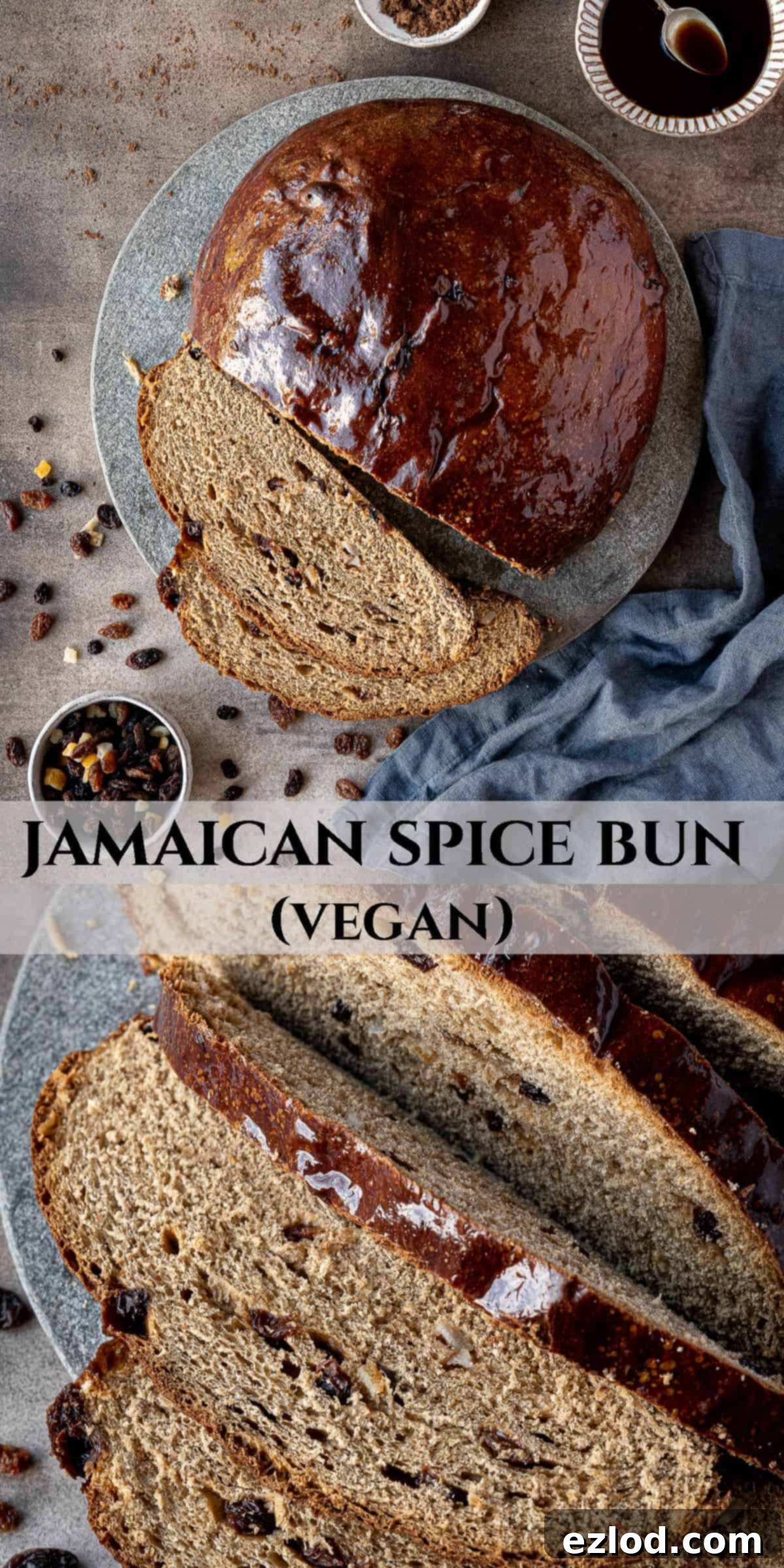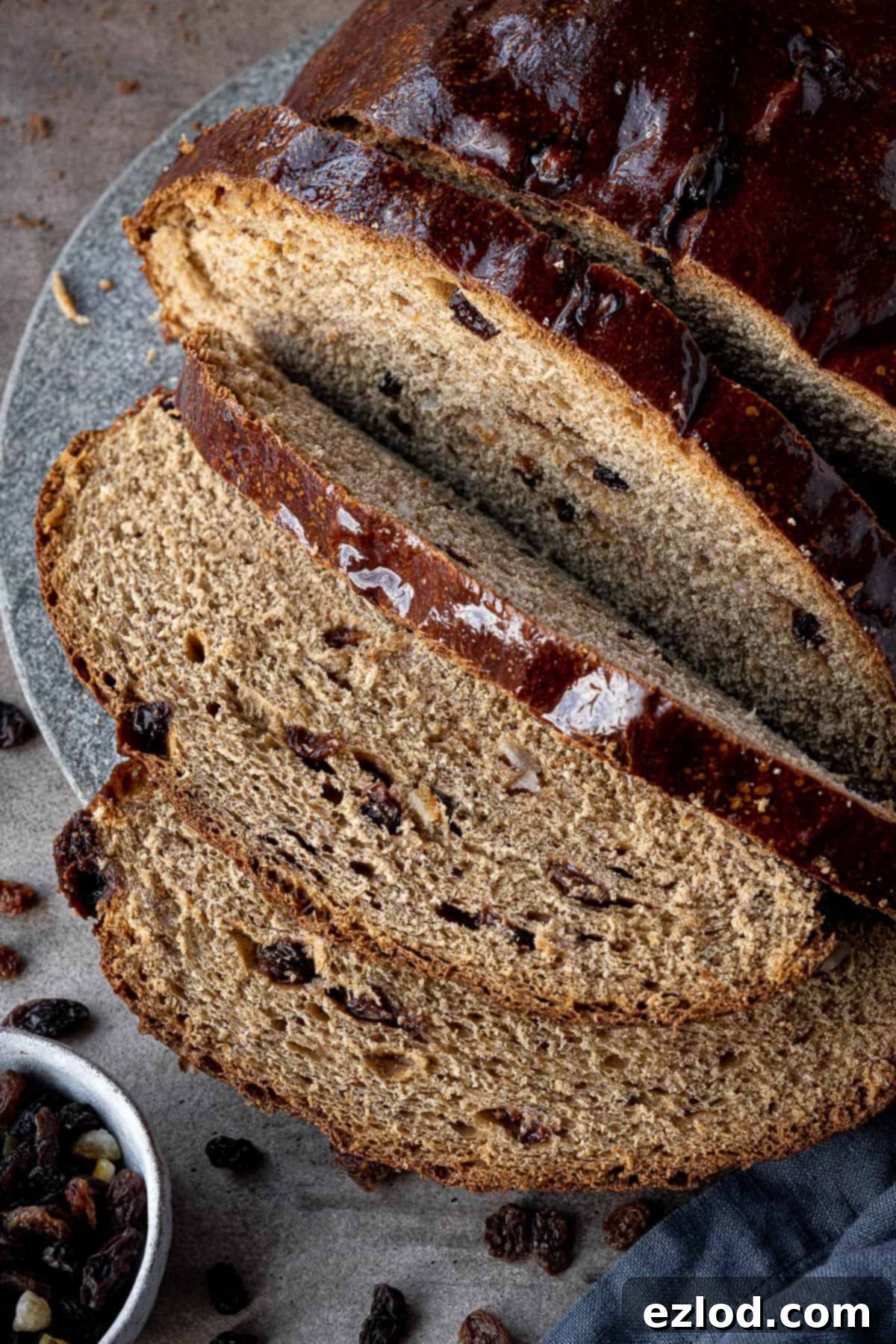Authentic Vegan Jamaican Spice Bun Recipe: Your Guide to a Rich & Fruity Easter Treat
Dive into the delightful world of **Jamaican Spice Bun**, a beloved sweet, spiced, and fruit-filled yeast bread that traditionally graces tables during Easter. For many, it’s a cherished alternative or complement to hot cross buns, offering a unique flavor experience that is both deeply satisfying and incredibly moreish!
This rich, soft, dense, and wonderfully sticky bun is infused with a medley of warm spices, making every bite a truly comforting experience. Whether you’re celebrating Easter or simply craving a taste of Caribbean tradition, this homemade version promises an authentic and irresistible treat.
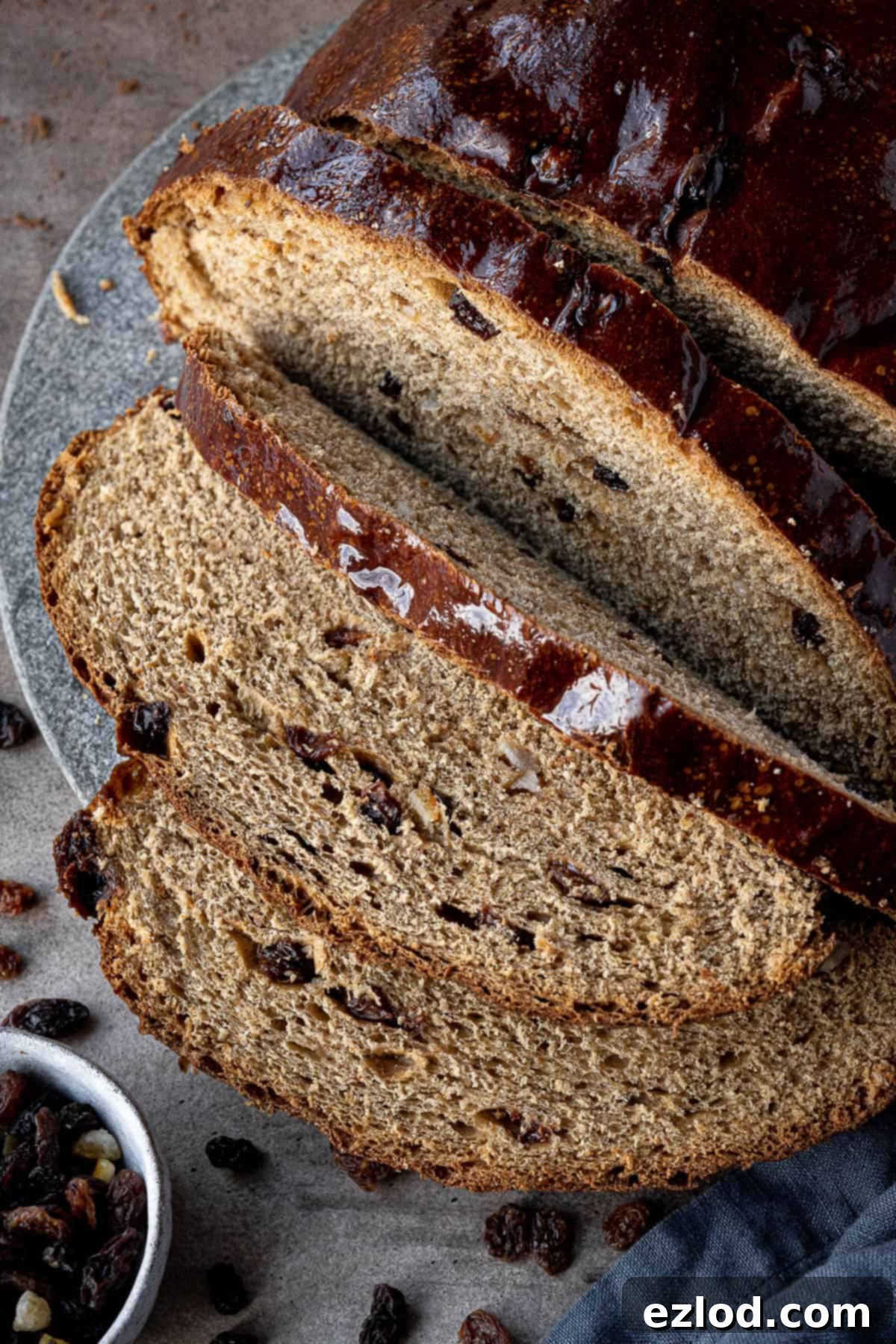
While commercially available spice buns are a familiar sight in many supermarkets, especially here in Birmingham where I’m based, and are often accidentally vegan, nothing quite compares to the warmth, aroma, and profound satisfaction of a freshly baked, homemade loaf. After numerous attempts and meticulous adjustments, I’m thrilled to finally share my perfected recipe for this iconic Jamaican bread. It may require a little patience, as enriched doughs take their time, but the resulting bun is exceptionally close to bakery-quality, if not superior, making every moment of effort truly worthwhile.
What Is Jamaican Spice Bun?
Jamaican Spice Bun, affectionately known as Easter bun or simply “bun” across the island, is a cornerstone of Jamaican culinary tradition, particularly prominent during the Easter season. It’s Jamaica’s flavorful answer to the hot cross bun – a profoundly spiced, sweet bread studded with an abundance of dried fruits. While deeply associated with Easter, it’s a delightful treat enjoyed year-round, often served with a slice of cheese, creating a harmonious balance of sweet and savory flavors that is uniquely Caribbean.
There are generally two main approaches to making spice bun: a yeasted version, which yields a softer, more bread-like texture, and a quick bread version, which uses baking powder or soda for leavening. This particular recipe focuses on the yeasted method. This means we’re crafting a heavily enriched dough, brimming with sugar, a generous blend of spices, and fat. This enrichment is what contributes to its exceptionally tender crumb and complex flavor, though it also means the dough requires a longer, slower rise. Rest assured, the wait is an integral part of developing its signature taste and texture, and the final product is absolutely worth the anticipation.
The characteristic texture of this Jamaican delight is moist and wonderfully soft, yet denser than typical everyday bread. Each bite delivers a comforting burst of warming, aromatic spices, perfectly balanced sweetness, and juicy pockets of plump, rehydrated fruit. It’s a truly sensory experience that captures the essence of Jamaican baking.
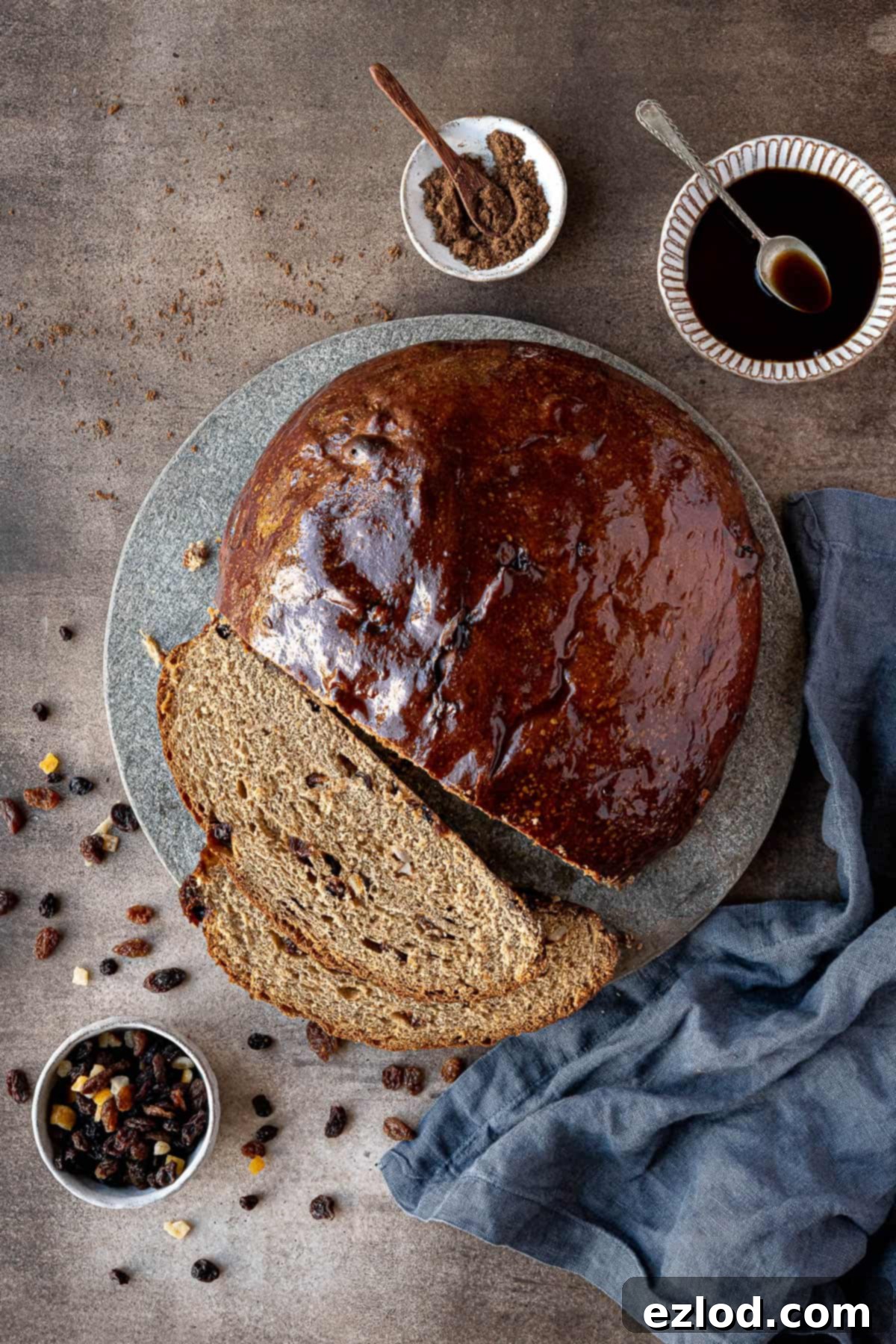
Essential Ingredients for Your Vegan Jamaican Spice Bun
Creating an authentic and delicious Jamaican Spice Bun requires specific ingredients that contribute to its unique flavor and texture profile. Here’s a detailed look at what you’ll need and why each component is crucial:
- Bread flour: To achieve that desirable soft, fluffy, and slightly chewy texture that is characteristic of a good spice bun, white bread flour is paramount. Its higher protein content develops stronger gluten, essential for the structure of yeasted breads. I strongly advise against using wholemeal flour, as it will result in a much denser loaf, altering the traditional texture significantly.
- Instant/fast action yeast: For convenience and consistent results, instant or fast-action yeast is my preferred choice. It can be mixed directly with the dry ingredients without needing prior activation, simplifying the process. Please note, active dry yeast or fresh yeast will require different quantities and activation methods, so stick to instant yeast for this recipe unless you are confident in making the necessary adjustments.
- Salt: A non-negotiable ingredient in bread making! Salt isn’t just for flavor; it plays a vital role in controlling yeast activity and strengthening the gluten structure. Omitting it will lead to a bland bun with an inferior texture.
- Non-dairy milk: Soy milk is my top recommendation for baking this spice bun due to its higher protein content, which closely mimics the properties of dairy milk, contributing to a richer crumb. However, any variety of unsweetened non-dairy milk will work effectively. Just be sure to choose an unsweetened option to control the overall sweetness of the bun.
- Vegan butter: For the best possible texture and flavor, a block-style vegan butter is superior to spreadable varieties. Brands like Flora Plant Butter or Naturli Vegan Block are excellent choices, providing the necessary fat content and richness that makes this bun so delectable.
- Brown sugar: This is a key ingredient for both flavor and moisture. You absolutely want to use a dark brown soft sugar or muscovado sugar. These sugars impart a deep caramel-like flavor and retain moisture better than granulated sugar, contributing to the bun’s signature sticky density. Do not substitute with other sugar types.
- Treacle: Black treacle (or molasses, if treacle isn’t available) is essential for the characteristic dark color and complex, slightly bitter-sweet depth of flavor in Jamaican spice bun. It’s not just a sweetener; it’s a flavor enhancer.
- Spices: The heart of spice bun lies in its aromatic spice blend. My recipe calls for mixed spice, cinnamon, nutmeg, allspice, and vanilla extract. This combination creates the warming, festive flavor profile. If mixed spice is unavailable, pumpkin spice can serve as a suitable alternative.
- Dried fruit: A generous amount of dried fruit is a hallmark of this bun. I typically use a pre-mixed blend of raisins, sultanas (golden raisins), currants, and candied peel. Feel free to customize this to your preference, adding or omitting fruits as desired.
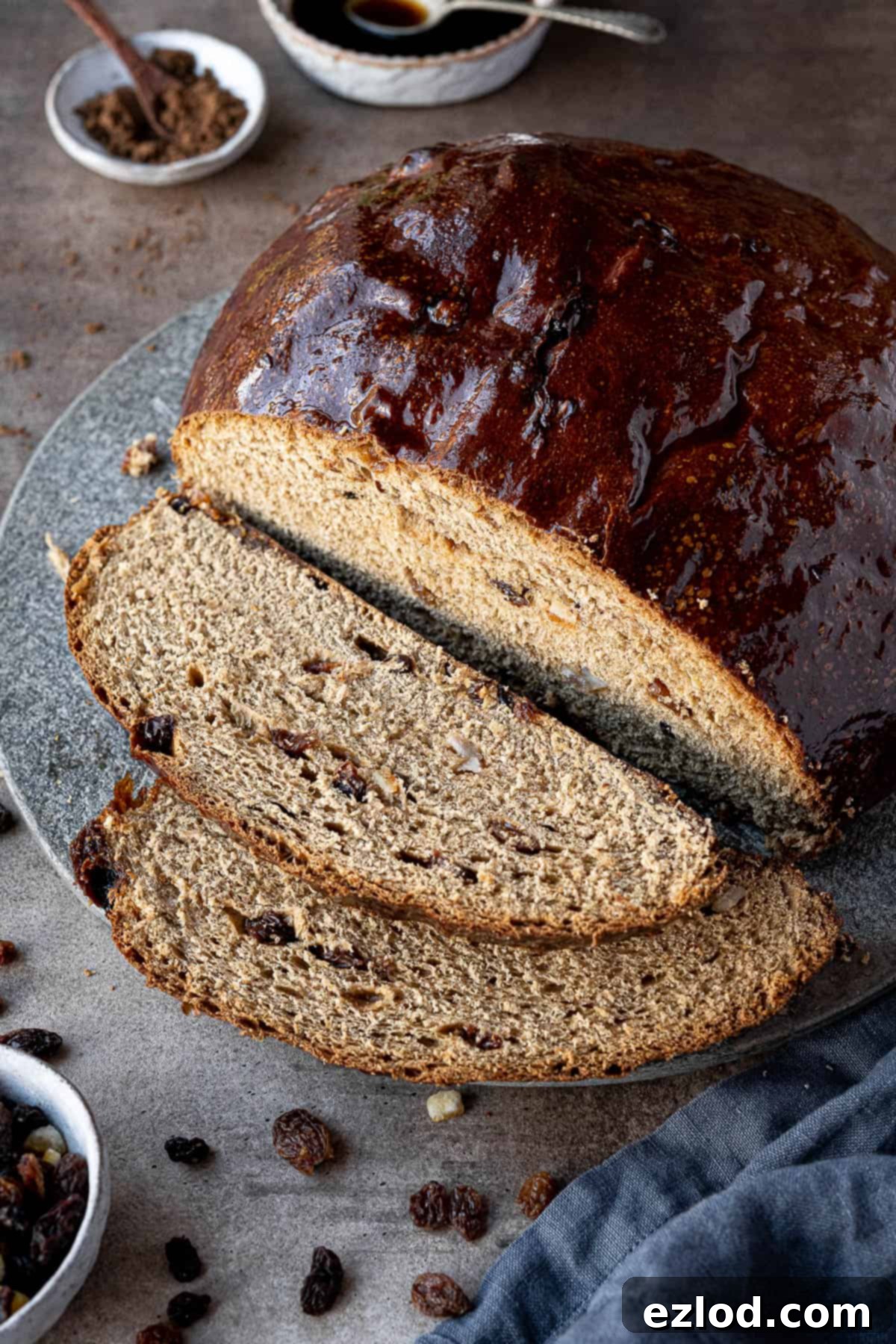
How To Make Jamaican Spice Bun: A Step-by-Step Guide
(For precise measurements and detailed instructions, please refer to the comprehensive recipe card located at the bottom of this page.)
Crafting this delicious Jamaican Spice Bun begins with combining your dry ingredients. In the bowl of a stand mixer, fitted with a reliable dough hook, thoroughly mix the bread flour, instant yeast, salt, dark brown sugar, and your aromatic blend of spices. Ensure they are well distributed before proceeding.
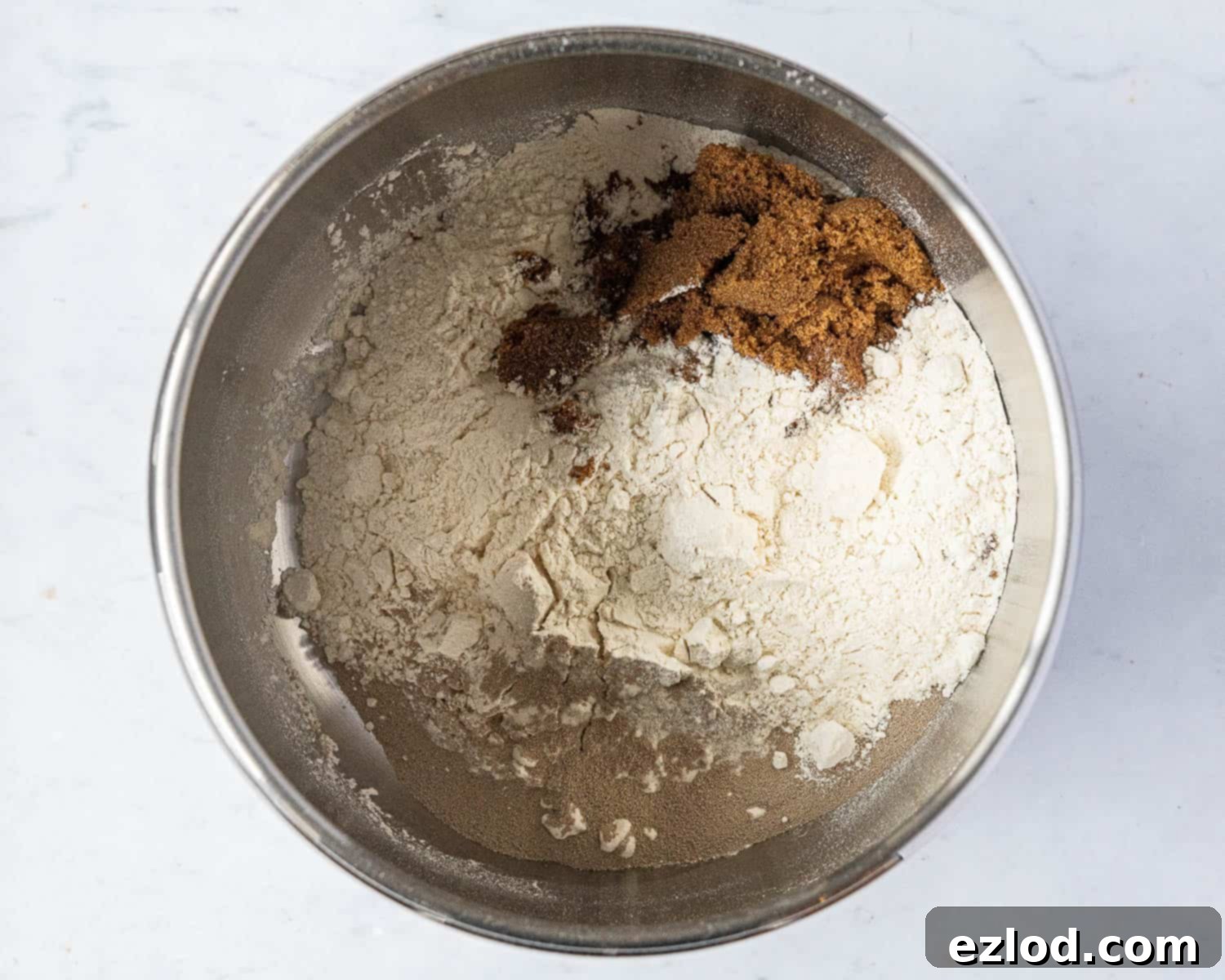
Next, introduce the wet ingredients: the non-dairy milk, lukewarm water, melted vegan butter, black treacle, and vanilla extract. Begin mixing on a low speed. Initially, the mixture will come together to form a rough, somewhat sticky dough. Don’t be alarmed by its stickiness at this stage; it’s perfectly normal for an enriched dough.
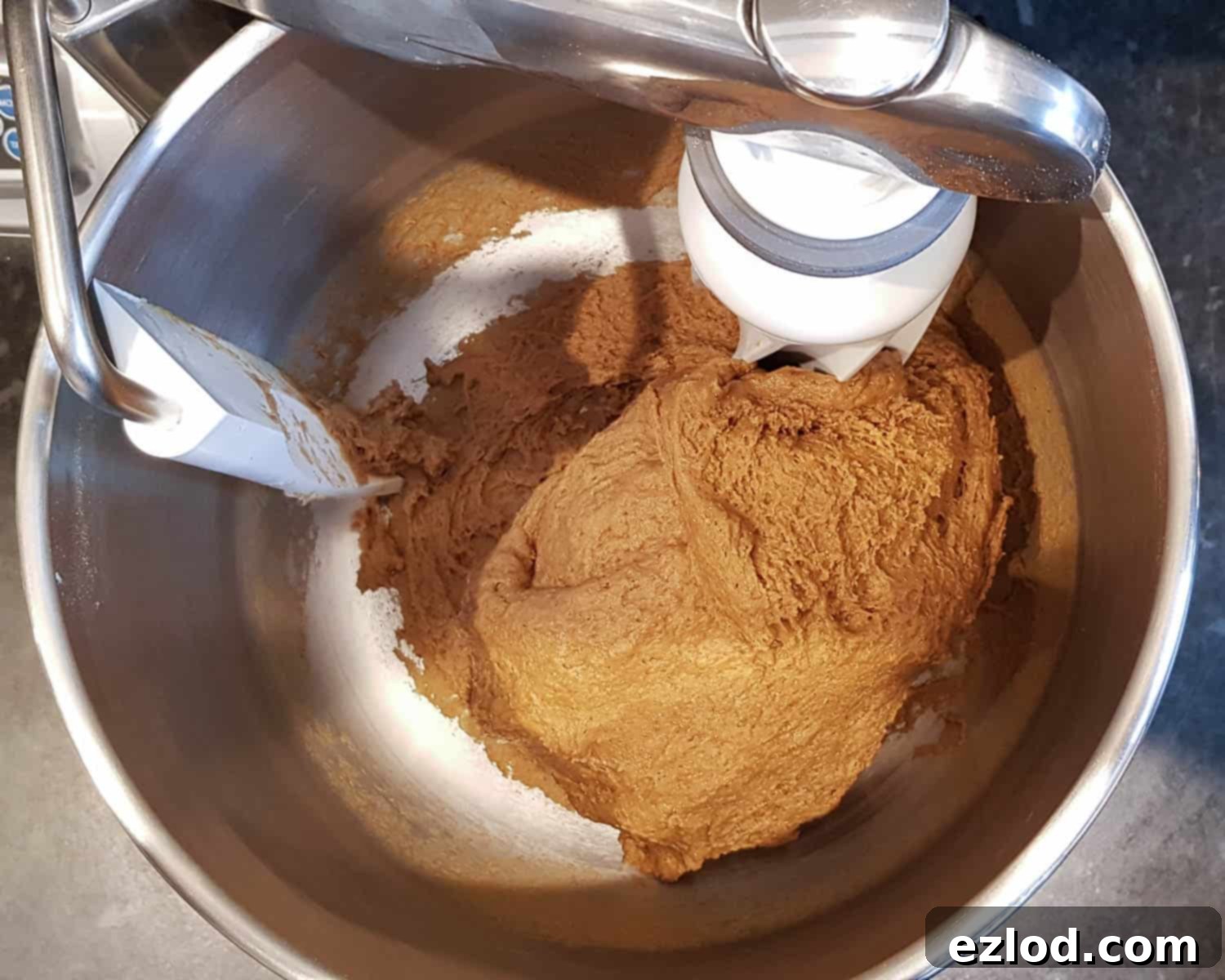
Increase the mixer speed to medium and continue kneading for approximately 10 minutes. During this time, the dough will transform, becoming wonderfully smooth and elastic. It should begin to pull away cleanly from the sides of the bowl, indicating proper gluten development.
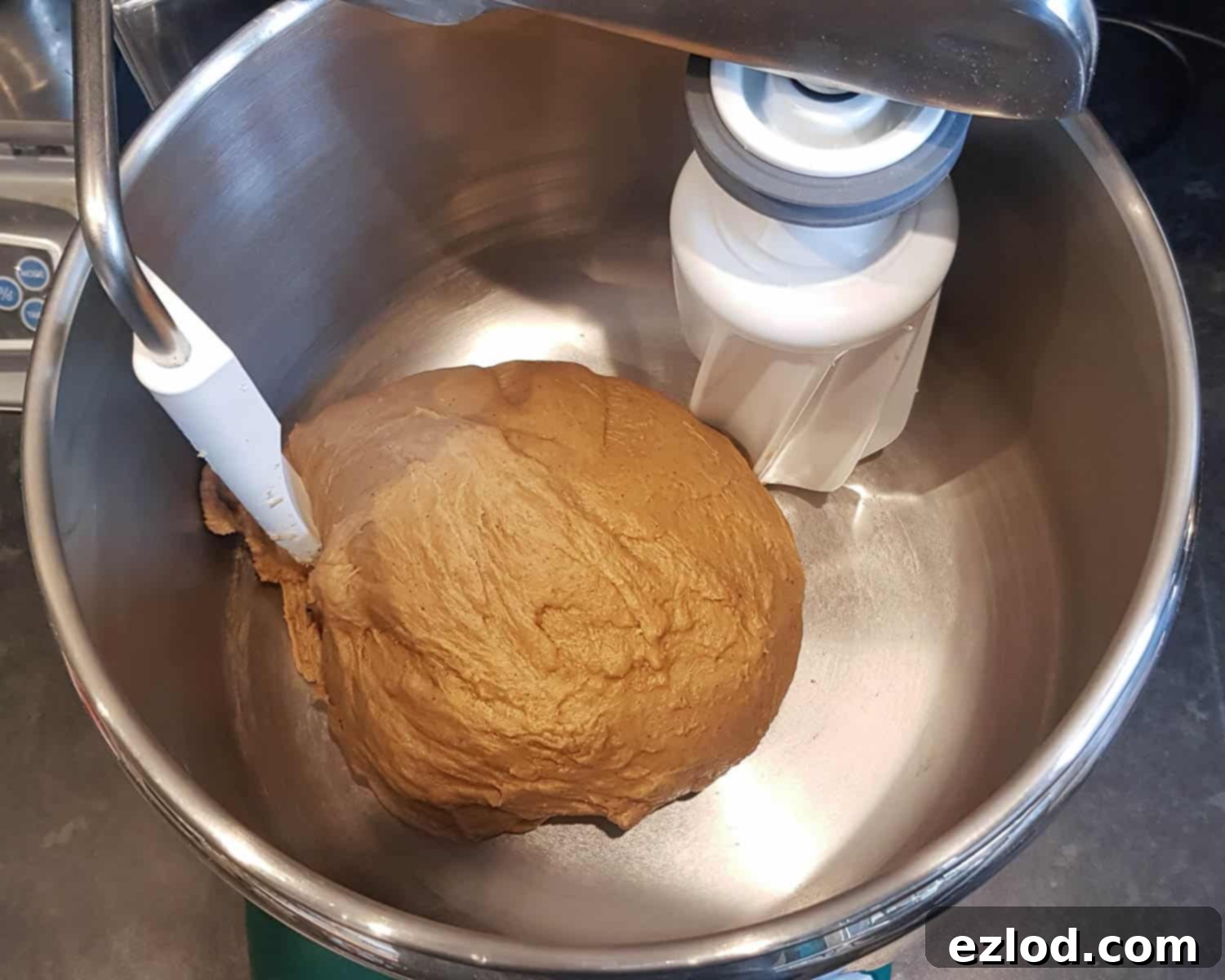
A good test for readiness is the “windowpane test”: you should be able to stretch a small piece of the dough very thinly, almost transparently, without it tearing. This signifies that the gluten is well-developed and the dough is ready for its first rise.
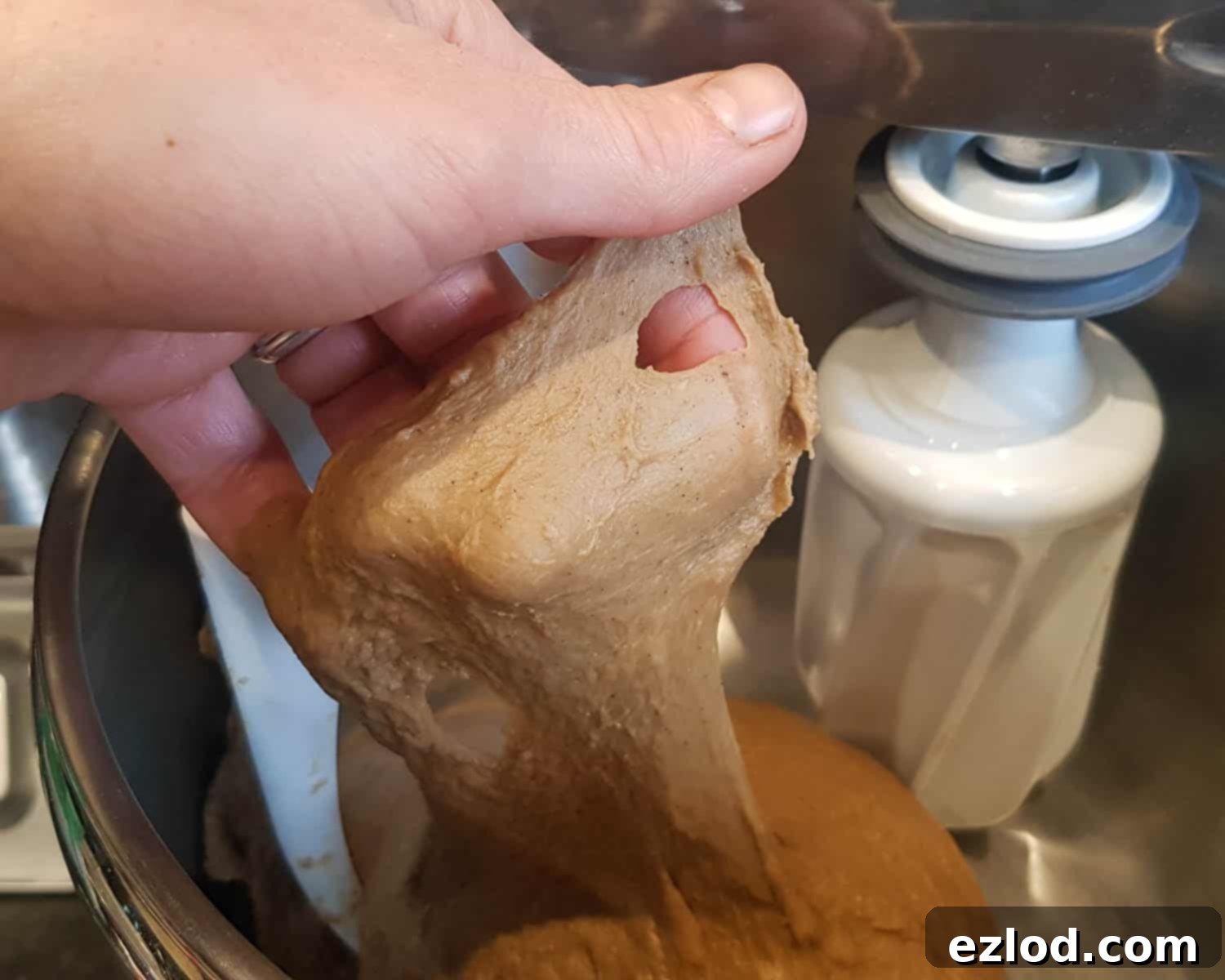
Form the dough into a neat ball, then place it into a large, lightly oiled bowl. Cover the bowl loosely with plastic wrap or a damp tea towel and let it rise in a warm, draft-free spot until it has visibly doubled in size. This primary fermentation can take anywhere from 2 to 3 hours, depending on the ambient temperature.
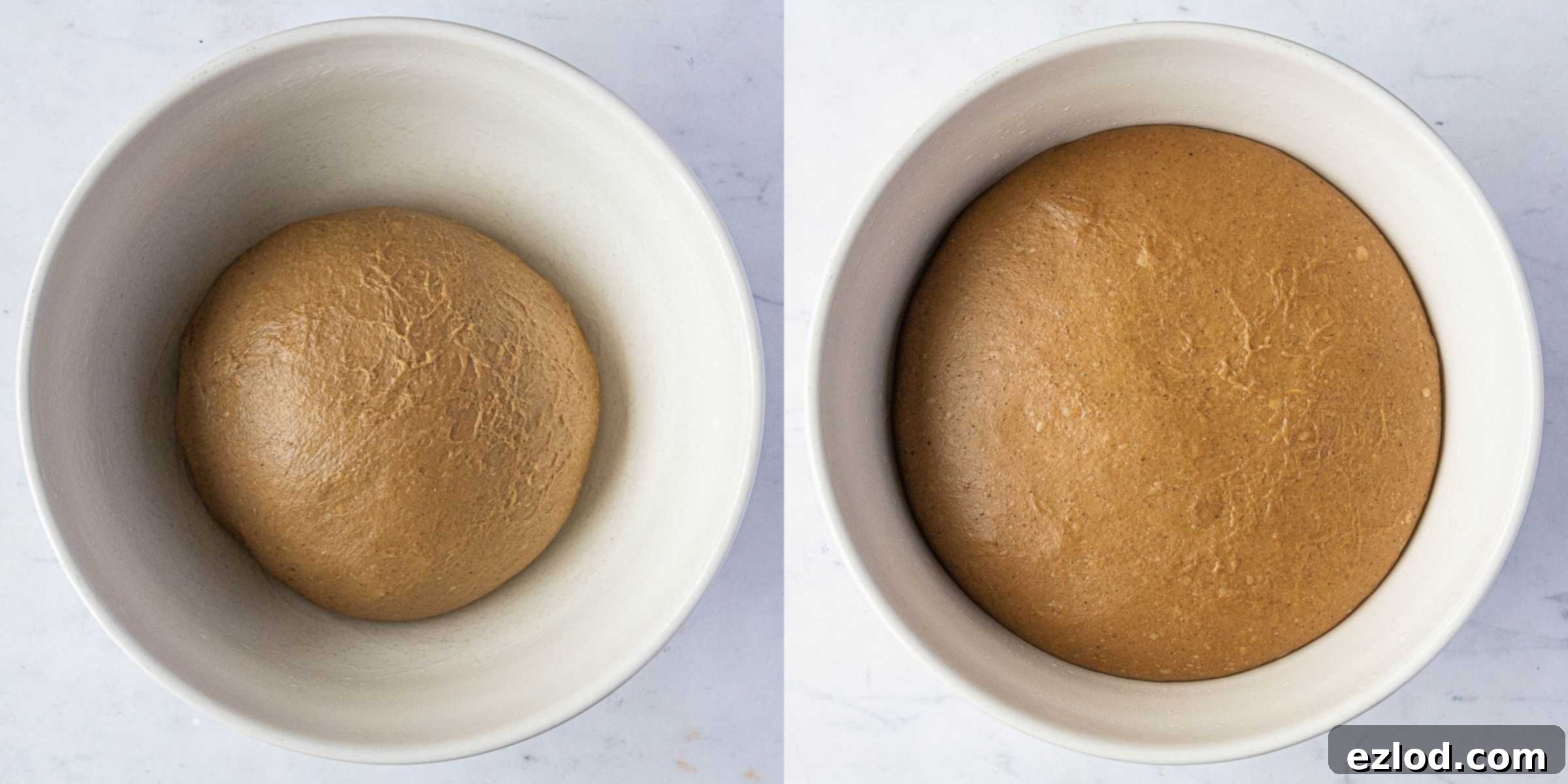
Once risen, gently punch down the dough to release the air. Scatter your chosen dried fruits evenly over the dough and knead gently until they are uniformly distributed throughout. It’s important to ensure no fruit pieces are protruding on the exterior, as they can burn during baking.
Reshape the dough into a cohesive, neat ball. Transfer this shaped bun onto a baking sheet lined with greaseproof paper. Loosely cover it again and allow it to undergo a second rise in a warm place until it has almost doubled in size, which typically takes 1 ½ to 3 hours. The bun should appear visibly puffy and slightly springy to the touch.
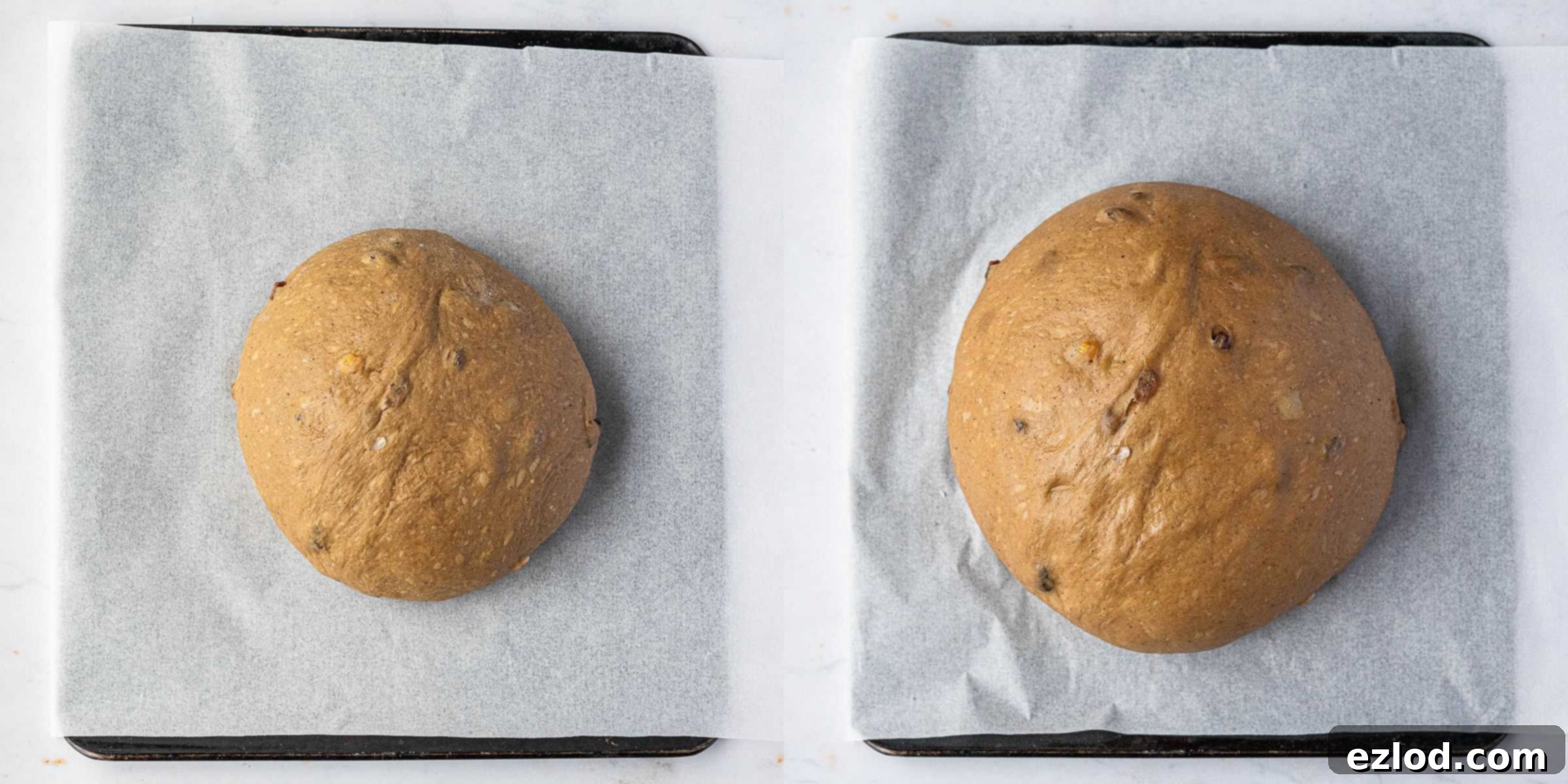
Just before baking, lightly brush the top of the dough with a little non-dairy milk. Then, bake for approximately 50 minutes. Immediately after removing the golden-brown bun from the oven, generously brush its entire surface with a simple glaze made from brown sugar and water. This creates the signature sticky, glistening crust that makes Jamaican Spice Bun so irresistible.
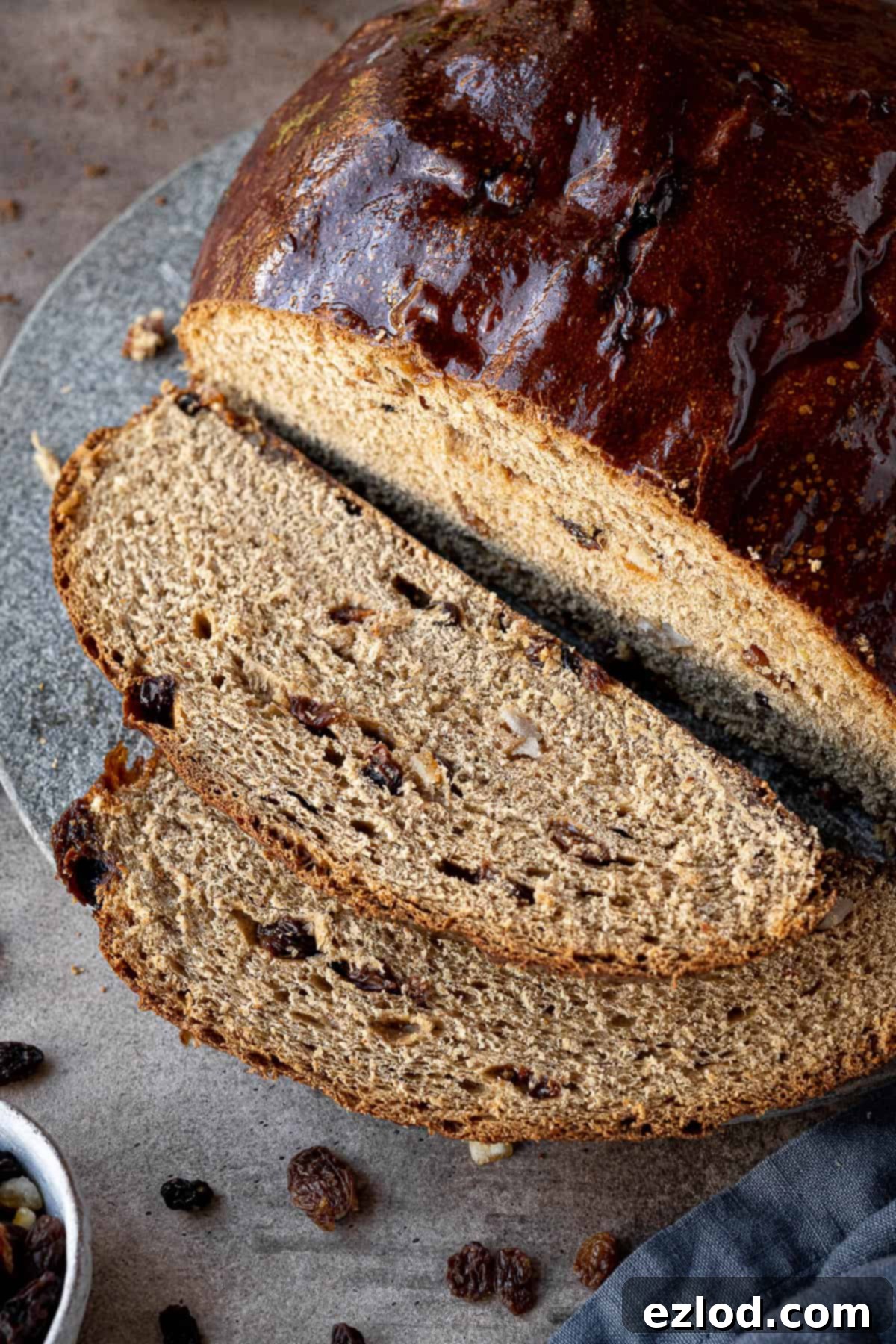
Top Tips for the Perfect Jamaican Spice Bun
Achieving the perfect Jamaican Spice Bun involves a few key considerations that can elevate your baking experience and ensure outstanding results:
- Metric Measurements are King: As with all my baking recipes, I wholeheartedly recommend using metric measurements with a digital kitchen scale over volumetric cup conversions. Cups are notoriously imprecise and can lead to inconsistent results, particularly in baking where accuracy is crucial. A scale provides far better consistency, and honestly, it’s often less messy too!
- Embrace the Stickiness: This dough is enriched with milk, sugar, butter, and treacle, which makes it inherently soft and quite sticky. If you own a stand mixer, this is undoubtedly the easiest way to manage the kneading process, saving you considerable effort. If kneading by hand, prepare for a workout and potentially some sticky hands – it’s all part of the process!
- Check Your Yeast’s Vitality: Old or expired yeast is a common culprit for bread that refuses to rise. Always double-check the expiry date on your yeast packet before you begin. Fresh, active yeast is fundamental for a well-risen, airy bun.
- Temperature Matters for Rising: The rising time for this dough is highly dependent on the ambient temperature of your kitchen. On warmer days, the yeast will be more active, and the dough will rise much faster. Conversely, in a cooler environment, it will take considerably longer. Be flexible with the suggested rising times and observe your dough, rather than strictly adhering to the clock.
- Patience is a Virtue: Due to the heavy enrichment of sugar, butter, and spices, this dough can be slow to rise, sometimes taking up to 6 hours for a full first rise, especially if your kitchen is cold. Plan accordingly and give yourself ample time. I often find it convenient to prepare the dough the day before I intend to serve it, allowing for a leisurely rise overnight in a slightly cooler spot.
- Storage: Once completely cooled, your homemade Jamaican Spice Bun will remain fresh and delicious for approximately 3 days when stored in an airtight container at room temperature. This helps preserve its softness and prevents it from drying out.
Can I Freeze Jamaican Spice Bun?
Absolutely! This Jamaican spice bun is an excellent candidate for freezing, allowing you to enjoy its delightful flavors long after baking. You can freeze it either whole or sliced. To prevent freezer burn and maintain its quality, ensure the bun is completely cold before wrapping it tightly in plastic wrap, followed by a layer of aluminum foil, or placing it in a freezer-safe bag. When you’re ready to enjoy it, simply allow it to defrost at room temperature. For optimal freshness, a quick warm-up in a low oven after defrosting can also revitalize its texture.
Given the time and effort involved in making this enriched bread, consider doubling the recipe and baking two loaves. You can enjoy one fresh and freeze the other for a convenient treat whenever the craving strikes!
Can I Knead The Dough By Hand?
While a stand mixer certainly simplifies the process for this soft and sticky dough, hand kneading is entirely possible and deeply rewarding. Be prepared for a good arm workout and a slightly messy but satisfying experience! When kneading by hand, it’s crucial to resist the urge to add excessive flour to your work surface. Adding too much flour will make the dough dry and stiff, compromising the final texture of your bun. Instead, if the dough becomes too sticky, lightly oil your hands and the work surface. This helps prevent sticking without altering the dough’s hydration.
A bench scraper will become your best friend during hand kneading. It’s incredibly useful for scraping the sticky dough off the surface and folding it back onto itself, making the kneading process much more manageable.
How To Speed Up The Dough Rising Time
If your kitchen is on the cooler side and you’re looking to accelerate the rising process for your Jamaican spice bun, there are a couple of effective methods you can employ:
- Warm Oven Method (Gentle Heat): Briefly heat your oven to its lowest temperature for just a couple of minutes. Then, switch it off completely and open the oven door for about 30 seconds to allow some of the intense heat to escape. Test the warmth by holding your hand inside for a few seconds; it should feel pleasantly warm, akin to a warm summer day, not hot. Crucially, if the oven is too hot, it can kill the yeast, so exercise caution! Place your covered dough inside the warm, switched-off oven and close the door. On particularly cold days, you might need to repeat the warming process once more after an hour or so, but often, one gentle warm-up is sufficient.
- Warm Water Bath Method (Steam & Humidity): Alternatively, place an oven-safe bowl or loaf tin filled with boiling water at the bottom of your (cold, switched off) oven. Then, position your covered dough on the middle shelf. Close the oven door. The steam generated by the boiling water will create a warm, humid environment within the oven, which is ideal for encouraging yeast activity and promoting a faster, more consistent rise.
Both these methods create a controlled environment that helps the yeast thrive, cutting down on the overall rising time while still ensuring proper fermentation and flavor development.
How To Tell When The Bread Is Baked
Knowing precisely when your Jamaican Spice Bun is perfectly baked is crucial for achieving the best texture and flavor. Here’s how to tell:
- Internal Temperature (The Most Reliable Method): The gold standard for determining bread doneness is checking its internal temperature with a probe thermometer. For an enriched bread like spice bun, the internal temperature should ideally reach at least 90°C (194°F). Overbaked bread will turn out dry and crumbly, while under-baked bread will have a raw, doughy interior – definitely something to avoid! Since all ovens vary, relying solely on baking time can be misleading. Investing in a good probe thermometer is an incredibly handy and worthwhile kitchen tool for any baker.
- Visual and Auditory Cues (If No Thermometer): If you don’t have a probe thermometer, there are other indicators to look for. The bun should be well-risen, with a deep golden-brown crust. Insert a wooden skewer or toothpick into the center of the loaf; it should come out clean with no wet dough clinging to it, and should slide in and out smoothly with minimal resistance. Finally, gently tap the bottom of the loaf – a properly baked bun will sound hollow, indicating that the inside is cooked through.
Can I Make It Gluten-Free?
Unfortunately, I must advise against attempting to adapt this specific recipe to be gluten-free. Baking gluten-free bread is a highly specialized skill, and the entire recipe, including the ingredient ratios and techniques, would need a complete overhaul to account for the absence of gluten. As gluten-free baking is not within my area of expertise, I cannot provide reliable advice or modifications for this purpose.
For successful gluten-free results, it is always best to seek out and use a recipe that has been specifically developed and tested to be gluten-free, rather than trying to modify a traditional wheat-based recipe. The complexities of gluten-free flours and their interactions are vastly different from conventional bread flour.
More Delicious Easter Bread Recipes:
If you’re looking for more delightful sweet bread recipes, especially around Easter or for a cozy treat, explore these other fantastic options:
- Vegan Hot Cross Buns
- Vegan Banana Monkey Bread
- Chocolate Orange Hot Cross Buns
- Vegan Belgian Buns
- Almond Bread Twist
- Vegan Lemon Blueberry Rolls
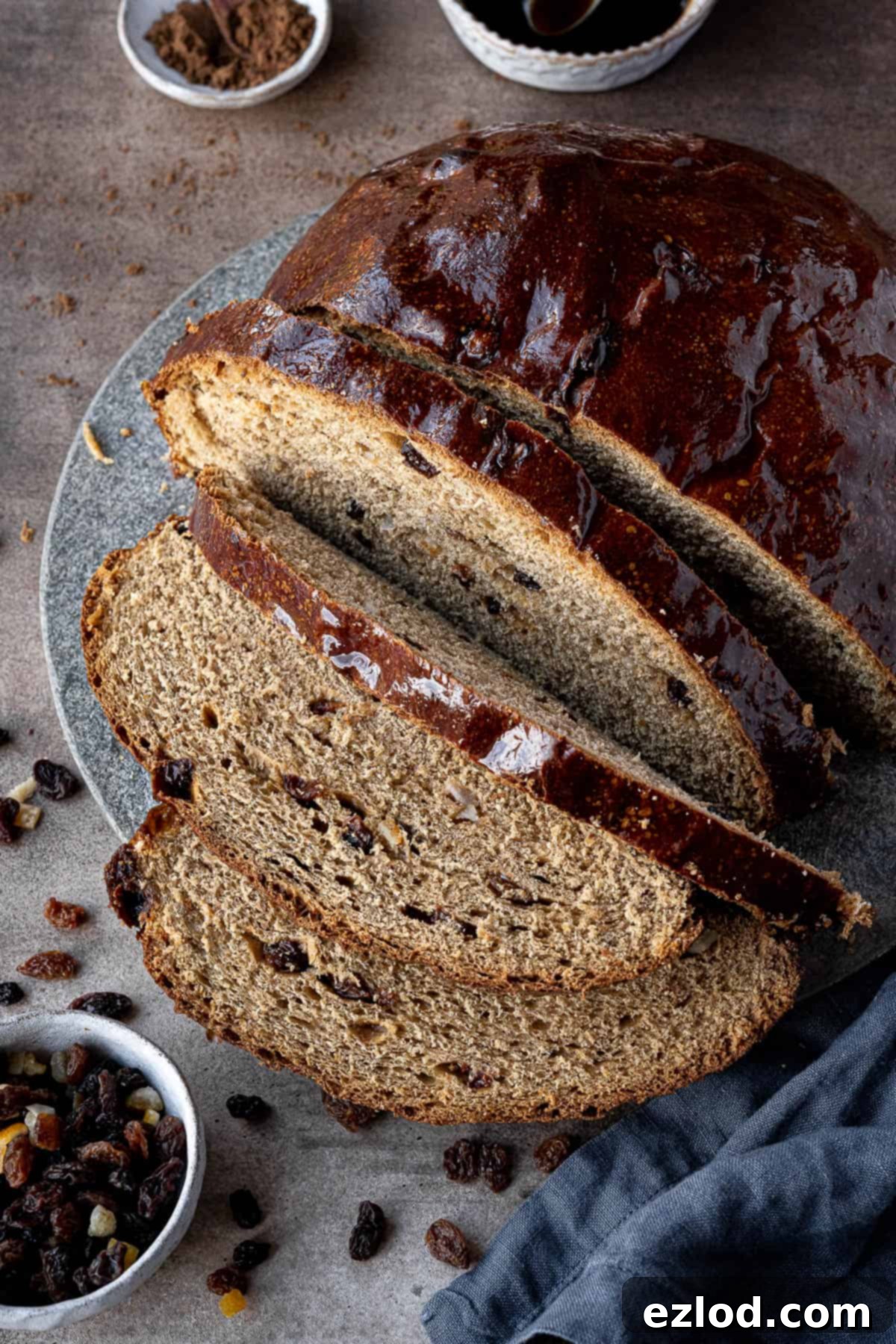
If you tried this incredible Vegan Jamaican Spice Bun recipe, I’d love to hear about your experience! Please rate it, leave a comment below, or share your creation on Instagram by tagging @domestic_gothess and using the hashtag #domesticgothess. Your feedback is truly appreciated!
All images and content on Domestic Gothess are copyright protected. If you wish to share this recipe, please do so using the provided share buttons. Please refrain from screenshotting or posting the recipe or content in its entirety. Instead, kindly include a direct link to this post for the complete recipe. Thank you for respecting my work!

Print
Jamaican Spice Bun (Vegan)
Ingredients
- 550 g (4 ½ cups) white bread flour
- 14 g (2 sachets) instant/fast action yeast
- 1 teaspoon salt
- 125 g (⅔ cup) dark brown soft sugar
- 2 teaspoons mixed spice
- 1 teaspoon cinnamon
- ½ teaspoon nutmeg
- ½ teaspoon alllspice
- 125 g (½ cup) unsweetened non-dairy milk (I use soy) plus extra for brushing
- 125 g (½ cup) lukewarm water
- 100 g (3 ½ oz) vegan block butter melted
- 35 g (1 ½ Tablespoons) black treacle or molasses
- 1 Tablespoon vanilla extract
- 80 g (½ cup) mixed dried fruit
Glaze:
- 2 Tablespoons dark brown soft sugar
- 2 Tablespoons boiling water
Instructions
-
Place the flour in the bowl of a stand mixer fitted with a dough hook (or dough roller if you happen to have an Ankarsrum one), add the yeast to one side and the salt, sugar, mixed spice, cinnamon, nutmeg and allspice to the other. Stir to combine.
-
Add the milk, water, melted butter, treacle and vanilla and mix on a low speed until it forms a rough, sticky dough.
-
Turn the speed up to medium and continue to mix for about 10 minutes until the dough is smooth and elastic and pulls away from the sides of the bowl cleanly. You should be able to stretch the dough very thinly before it tears (windowpane test).
-
Shape the dough into a ball, place in a large, lightly oiled bowl, cover and set aside to rise in a warm spot until doubled in size, about 2-3 hours.
-
Punch down the risen dough, scatter over the dried fruit and knead until evenly distributed.
-
Shape the dough into a neat ball, making sure that there is no fruit on the outside or it will burn.
-
Place on a baking sheet lined with greaseproof paper, loosley cover and set aside to rise in a warm spot until almost doubled in size, about 1 ½ – 3 hours. It is ready to bake when the dough is puffy and springs back slowly, leaving a small indentation, if you gently poke it with a finger. If it springs back quickly and fills in completely then it needs to rise for longer.
-
When the dough is almost ready, preheat the oven to 190°C/170°C fan/375°F/gas mark 5.
-
Gently brush the dough with milk then bake for 50 minutes. Cover with tin foil towards the end of baking if it starts to get too dark. The internal temperature should reach at least 90°C/194°F on a probe thermometer when it is ready.
-
While the bread is baking, mix the sugar and boiling water together to make the glaze.
-
When the bun is baked, remove it from the oven and brush all over with the sugar glaze. Keep going until you have used all of the glaze.
-
Leave to cool on the tray for 5 minutes then slide it onto a wire rack and leave to cool completely before slicing.
Notes
- Refer to the detailed post above for comprehensive tips, further insights, and step-by-step photos that will guide you through the baking process. Many common questions are likely addressed there!
- For the most accurate and consistent baking results, I highly recommend using metric measurements with a digital kitchen scale for all my recipes. Volumetric cup measurements are inherently less precise and can lead to variations in your final product. Using a scale not only ensures better consistency but often makes the baking process cleaner and easier!
